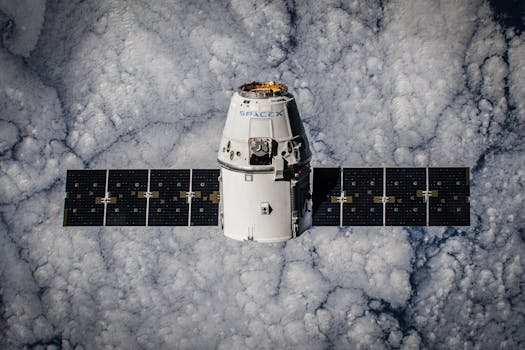The Future of Satellites: Advancements and Innovations in Space Technology

The Future of Satellites: Advancements and Innovations in Space Technology
The future of satellites is rapidly evolving with advancements in technology and innovations in space exploration. Satellites have been a crucial part of modern life, providing services such as navigation, communication, and weather forecasting. As technology continues to advance, the role of satellites is expanding, and their impact on various industries is becoming more significant.
Current State of Satellites
Satellites have been in use for several decades, and their capabilities have improved significantly over the years. Today, there are over 5,000 satellites in orbit around the Earth, providing a wide range of services. The majority of these satellites are used for communication, navigation, and weather forecasting. However, there are also satellites used for scientific research, Earth observation, and military purposes.
The current state of satellites is characterized by the use of traditional technologies such as geostationary orbit and large satellite platforms. However, there is a growing trend towards the use of smaller satellites, such as CubeSats and SmallSats, which offer greater flexibility and cost-effectiveness. These smaller satellites are often used for constellations, which provide global coverage and can be used for a variety of applications.
Advancements in Satellite Technology
There are several advancements in satellite technology that are driving the future of satellites. One of the most significant developments is the use of reusable launch vehicles, which can significantly reduce the cost of launching satellites into space. Companies such as SpaceX and Blue Origin are leading the way in this area, with reusable launch vehicles that can carry heavy payloads into orbit.
Another area of advancement is the development of new satellite platforms, such as the use of electric propulsion and advanced materials. These new platforms offer greater efficiency and flexibility, allowing satellites to operate for longer periods and provide more advanced services. The use of artificial intelligence and machine learning is also becoming more prevalent in satellite technology, enabling satellites to make decisions and adapt to changing conditions in real-time.
The use of 5G technology is also expected to play a significant role in the future of satellites. 5G offers high-speed, low-latency communication, which can be used for a variety of applications, including video streaming, online gaming, and virtual reality. Satellites can provide 5G services to remote and underserved areas, where traditional communication infrastructure is limited or non-existent.
Impact of Satellites on Various Industries
The impact of satellites on various industries is significant, and their role is expected to continue growing in the future. One of the most significant areas of impact is the communication industry, where satellites provide services such as broadband internet, television broadcasting, and mobile communication. Satellites also play a critical role in the navigation industry, providing location services and precision timing.
The use of satellites is also becoming more prevalent in the agriculture industry, where they can be used for crop monitoring, soil moisture analysis, and precision farming. Satellites can provide high-resolution images of crops, allowing farmers to identify areas of stress and take corrective action. This can lead to increased crop yields and reduced waste.
Satellites are also used in the weather forecasting industry, providing data on atmospheric conditions, ocean currents, and other weather-related phenomena. This data can be used to predict weather patterns and provide early warnings for severe weather events. The use of satellites in weather forecasting has saved countless lives and reduced the economic impact of severe weather events.
Conclusion
In conclusion, the future of satellites is rapidly evolving, with advancements in technology and innovations in space exploration. The current state of satellites is characterized by the use of traditional technologies, but there is a growing trend towards the use of smaller satellites, reusable launch vehicles, and new satellite platforms. The impact of satellites on various industries is significant, and their role is expected to continue growing in the future.